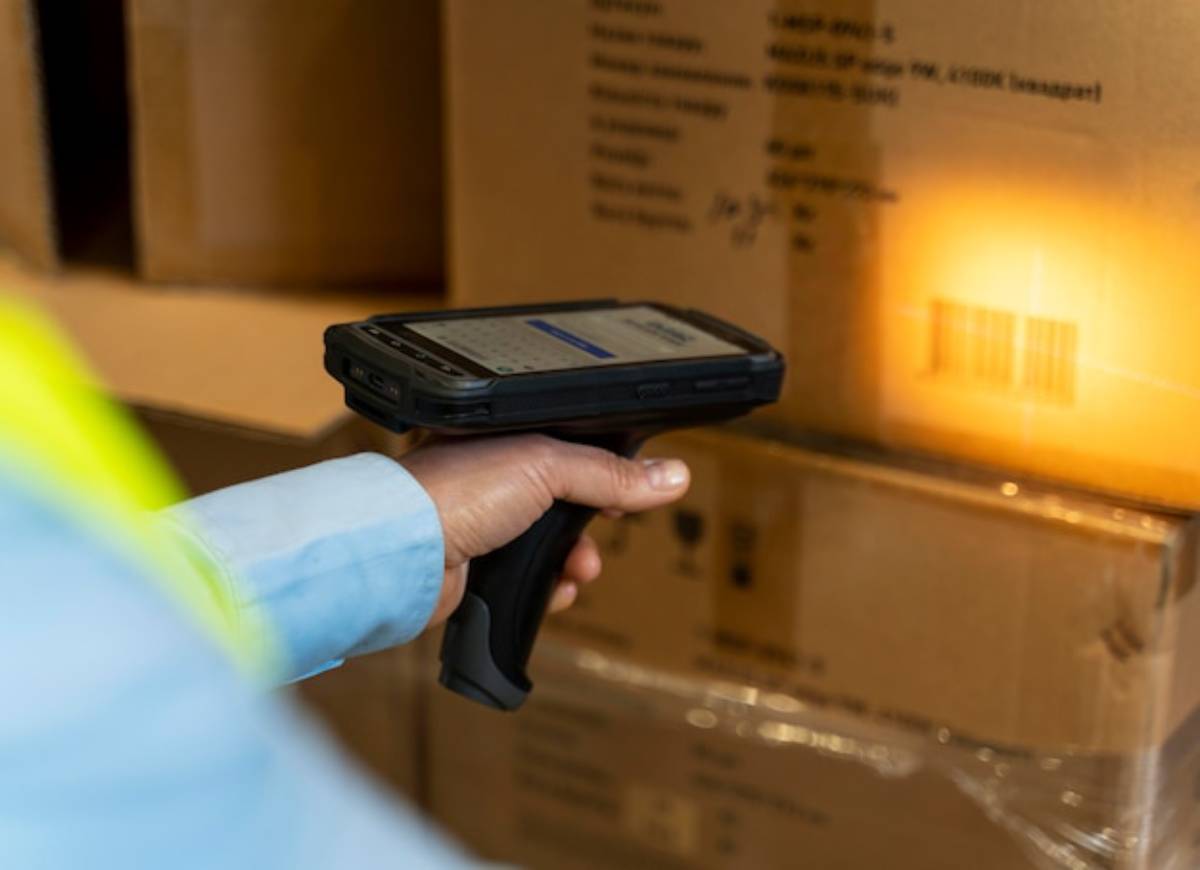
The Importance of Accurate Stock Tracking
Why Stock Accuracy Is the Unsung Hero of Small Business Success
Imagine this a customer walks into your store or browses your website, excited to purchase an item they saw advertised. They add it to their cart or bring it to the counter, only to be told, “Sorry, we’re actually out of stock.” It’s awkward. It’s frustrating. And for your customer, it’s a broken promise.
This is the reality when stock tracking isn’t accurate.
For small businesses, inventory accuracy is not just a nice-to-have – it’s essential. Whether you’re a bricks-and-mortar shop owner, an online seller, or juggling multiple sales channels, understanding and implementing effective inventory tracking methods can save you from unnecessary losses and keep customers coming back.
In this blog, you’ll learn why stock accuracy is important. You’ll find the best tracking methods and tips to improve your processes. You can do this without a large team or complicated systems. Let’s get to the heart of keeping your inventory under control.
What Is Stock Tracking and Why Should You Care?
The Basics of Stock Tracking
At its core, stock tracking is the process of monitoring and recording inventory as it moves in and out of your business. This includes incoming shipments, stock on hand, and items sold.
If you don’t know what you have, you can’t confidently order, sell, or restock.
Why It Matters More Than You Think
Here’s why inventory accuracy is critical:
- Avoiding stockouts and overselling
- Improving cash flow by not over-investing in slow-moving items
- Keeping customers happy with reliable availability
- Preventing shrinkage, theft, and unaccounted losses
Think of your stock as money sitting on a shelf. If you don’t know how much money you’ve got or where it is, how can you grow?
How Inventory Inaccuracies Creep In
Even with the best intentions, small mistakes can cause big problems.
- Manual entry errors during sales or restocking
- Unrecorded returns or exchanges
- Neglecting damaged or expired goods
- Staff not trained in tracking protocols
- Delayed stock updates from multiple sales channels
Real-world scenario? Picture a busy market stall with handwritten receipts. By the end of the day, you’re unsure which items were sold, swapped, or discounted. These gaps in record-keeping add up quickly.
Benefits of Accurate Inventory Tracking
1. Improved Customer Satisfaction
Customers expect what they see online or in-store to be available. When you deliver on that promise consistently, it builds trust.
2. Stronger Decision-Making
With reliable data, you can:
- Identify bestsellers
- Spot underperforming items
- Plan sales and discounts confidently
3. Smoother Supplier Relationships
Know exactly when to reorder and how much. Avoid both panic orders and overstocking.
4. Fewer Financial Surprises
Accurate records make financial forecasting and tax compliance much easier.
5. Reduced Shrinkage and Loss
Knowing what should be in your stock discourages theft and highlights discrepancies.
Inventory Tracking Methods: Which One Suits You?
Manual Spreadsheets (Good for Beginners)
Pros:
- Low-cost
- Customisable
Cons:
- Prone to human error
- Time-consuming
- Hard to scale
Best for: Micro-businesses with limited stock
Barcode Scanning Systems

Pros:
- Fast and efficient
- Reduces human error
- Real-time updates
Cons:
- Upfront cost
- Requires training
Best for: Retail shops, warehouses
QR Code Inventory Systems
An upgrade from barcodes, QR codes can store more data.
Pros:
- Easy to implement with smartphones
- Great for detailed item tracking
Cons:
- Requires compatible tech
- Slightly slower than barcode scanning
RFID (Radio Frequency Identification)
Pros:
- No line-of-sight required
- Automates tracking of large volumes
Cons:
- High cost
- Overkill for small inventories
Inventory Management Software
Examples: inFlow, Zoho Inventory, QuickBooks Commerce
Pros:
- Real-time insights
- Integrates with sales platforms
- Scalable and robust
Cons:
- Monthly fees
- Learning curve
Learn more about these solutions in: Utilising Barcodes and QR Codes in Inventory Management.
Tips to Improve Stock Accuracy in Your Business

1. Implement Cycle Counting
Instead of one big annual stocktake, count small sections regularly. It’s less disruptive and more accurate.
2. Train Your Team
Your stock is only as accurate as your team’s input. Provide simple, clear processes and reinforce their importance.
3. Use FIFO (First-In, First-Out)
Especially for perishable or season-sensitive stock. This reduces losses due to expiry or obsolescence.
4. Set and Monitor Reorder Points
Don’t rely on guesswork. Base reorder levels on historical sales and lead times.
5. Track Returns Properly
Always log returned items and inspect their condition. Are they saleable or damaged?
6. Audit Regularly
Check actual stock against system records. Investigate and resolve any discrepancies.
7. Keep Storage Areas Organised
Label shelves clearly, separate SKUs, and avoid clutter. Mistakes often start in messy environments.
Real-Life Example: Sarah’s Online Homeware Store

Sarah runs a growing homeware shop online, sourcing handmade decor from local artisans. She began tracking manually on Excel. However, she often faced stock discrepancies, especially during flash sales.
After adopting barcode-based tracking and inventory software, she noticed:
- A 40% drop in stock errors
- 30% faster dispatch times
- Higher customer reviews due to order accuracy
“Now I can focus on designing and sourcing, not just fixing inventory mess-ups,” she shared.
The Cost of Inaccuracy: A Breakdown
Still not convinced? Here’s what poor tracking might cost you:
| Mistake | Potential Cost |
|---|---|
| Overselling a popular item | Loss of repeat customers, refunds |
| Overstocking | Wasted cash, increased holding costs |
| Stockout on trending product | Missed sales, lost market share |
| Errors during audits | Delayed reporting, tax penalties |
| Theft or shrinkage | Profit erosion |
How to Choose the Right Tracking Method
When deciding on a method or system, consider:
- Your business size and complexity
- Your budget and tech comfort level
- Whether you sell online, offline, or both
- The frequency of your stock movements
If you’re just starting out, begin with spreadsheets and cycle counting. As you grow, move into barcodes and integrate with e-commerce platforms.
Need help choosing a system? Read our guide: How to Conduct a Physical Inventory Count.
Integrating Stock Tracking With Sales Channels
Many small businesses sell on multiple platforms their website, Etsy, Amazon, or in-store.
Without a centralised system, stock errors happen fast. A unified inventory system syncs all channels. When one item sells, it updates everywhere.
Benefits of Integration:
- Avoid overselling
- Automate order processing
- Unified reporting
Simple integrations, like syncing your Shopify store with Zoho Inventory, can really help.
Conclusion: It’s Time to Take Stock Seriously
When your inventory is accurate, your whole business runs smoother.
You save money, satisfy customers, and sleep easier knowing your numbers add up. From manual methods to software tools, there’s a solution for every budget and business type.
Here’s your next step: Review your current tracking process today. Identify gaps. Consider trialling a tool that fits your needs. Small changes in stock accuracy can lead to big gains in profit and peace of mind.
Got a stock story to share or a favourite tracking tip? Drop a comment below or share this article with your fellow small business owners. Let’s build better inventory habits together!


